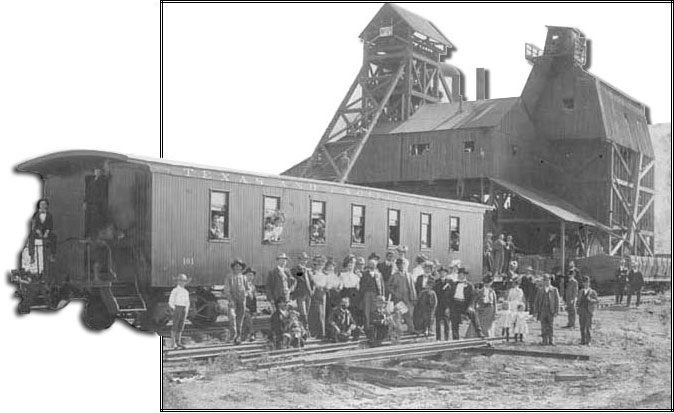Thurber Collection
by Frank Chamberlain
The Thurber Collection is a compilation of photographs assembled from a variety of sources including the Dick Smith Library at Tarleton and the Stephenville Museum. These photos document the story of one of the most unique Texas towns for the past century.
Thurber, Texas is a ghost town today, but from the 1880s until the 1920s, the city was one of the largest cities between Fort Worth and El Paso. It was the most important coal-mining center in Texas during those years. Thurber was unique because the entire city was owned and controlled by the Texas & Pacific Coal Company. This included all of the land, school, church, stores, and employee homes. The city was so self-contained that a barbed-wire fence was erected and armed guards were posted around the perimeter to keep undesirables such as peddlers or union organizers from entering.

Thurber also was one of the top brick producing centers in the nation. Many buildings and highways throughout Texas are still composed of Thurber brick. The most notable of these are Congress Avenue in Austin, Camp Bowie Boulevard in Fort Worth, and the Galveston sea wall. Another notable aspect of the Thurber community was the extraordinarily varied ethnic population. As many as eighteen nationalities lived in the city and worked in the mines. Most of these people were from Eastern European countries and came to America with the purpose of working in various mines. The T&P Coal Company actively recruited these workers to come to Thurber.
The discovery of oil in nearby Ranger eliminated the need for coal as a fuel. Therefore, the coalmines were closed in 1923, causing many of the ex-miners to leave town. The oil business also played a role in shutting down the brickyards as new oil-based asphalt was developed. This new discovery was far more economically viable than using bricks to pave roads. With the industries gone, the Thurber was quickly abandoned. The Company either razed or moved almost every single mine, building, and house in town. One of the few remaining structures is the famous smokestack that stands near Interstate 20. By the end of the 1930s, the town of Thurber had ceased to exist.
Thurber is no longer found on any map of Texas. However, it still attracts visitors due to a pair of restaurants (The Smokestack and New York Hill) and the newly established W.K. Gordon Center For Industrial History of Texas. The latter is a museum that chronicles the history of Thurber. The memory of Thurber is kept alive by the annual Thurber reunion held each June. At this event, former Thurber citizens and their kin meet to reminisce and celebrate the legacy of one of the more colorful cities in Texas history.